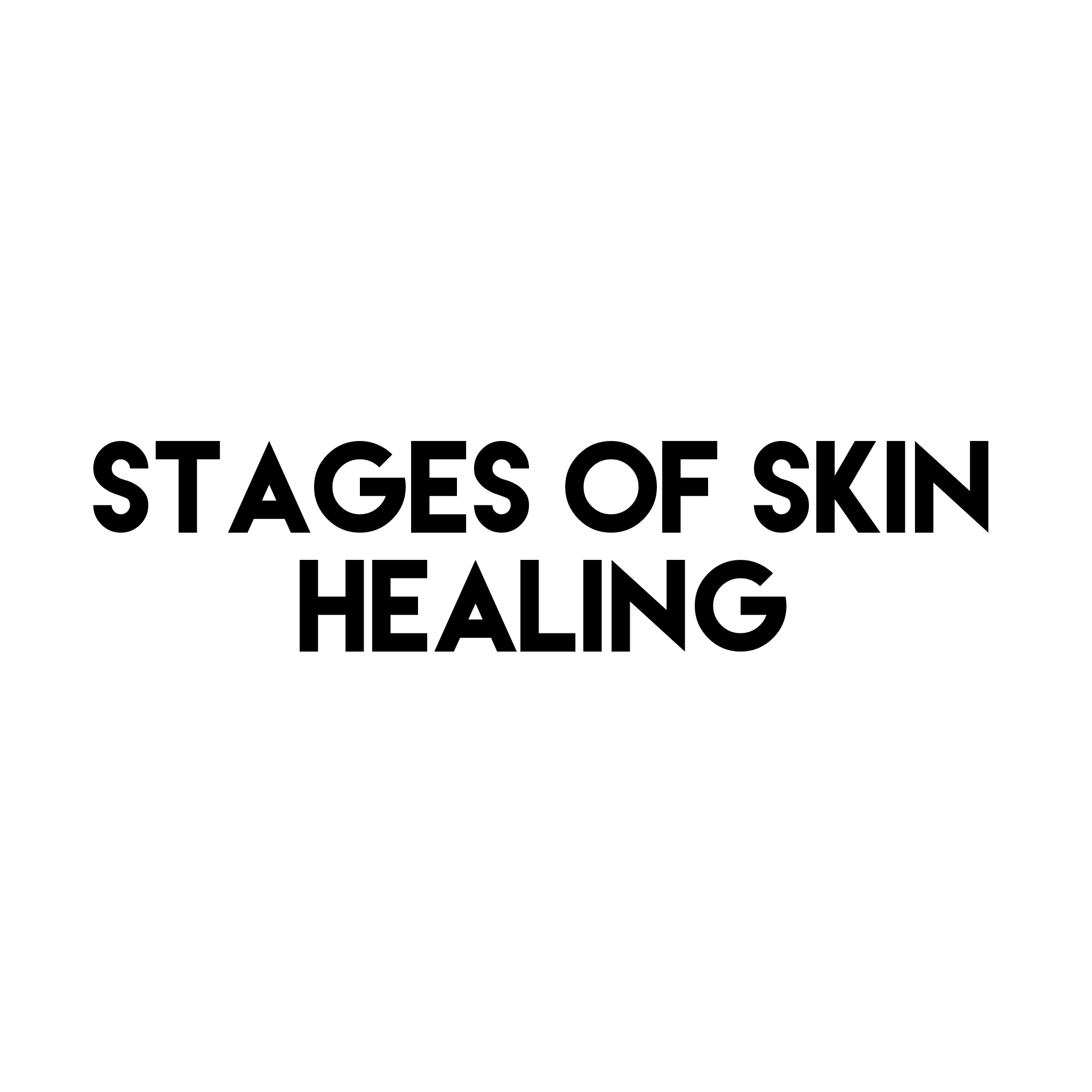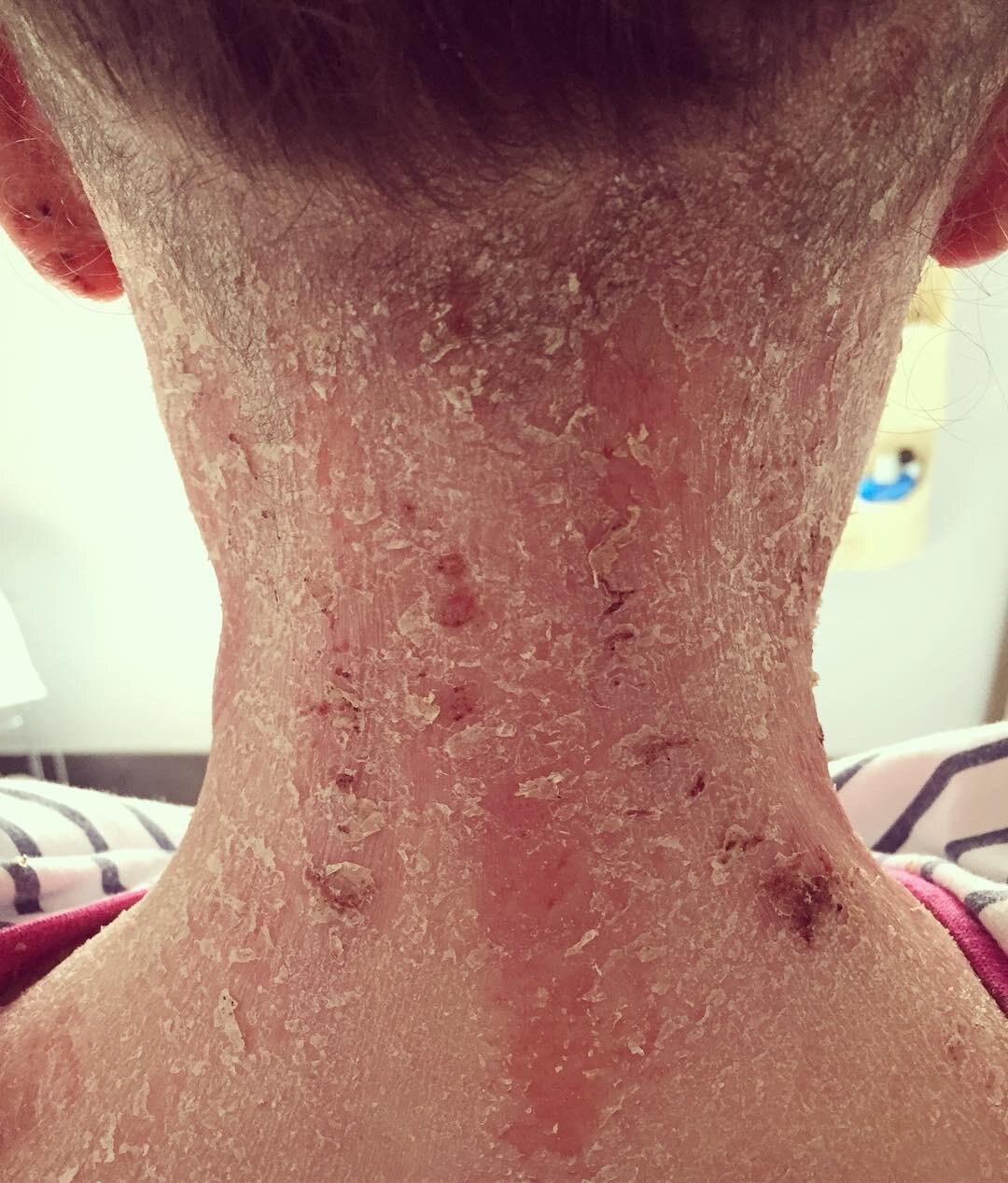Stages of Skin Healing in TSW
There are several stages of skin healing:
Inflammation
Oozing, crusting and scab forming
Proliferation
Remodelling
Please note that this is a very simplified version of the skin healing process.
INFLAMMATION
At the beginning of every flare is inflammation: when the skin appears very red, usually feels warm to touch and is sometimes accompanied with swelling and a general feeling of malaise. If you are beginning withdrawal, this is part of the withdrawal process. If you are experiencing this having already withdrawn for a period of time, it is possible that you are experiencing a flare up from a trigger. (Please refer to my 7 flare triggers webpage for more information on this.)
During the inflammation phase, the body is preparing resources for the skin to begin its healing - blood containing nutrients and oxygen and fluids containing repair cells rush to the affected areas, causing redness, warmth and swelling.
You may use ice packs, do lymphatic massages or elevate your limbs to alleviate the swelling, but inflammation will take its own time to go away.
Hives are a form of localised inflammation. When the skin is triggered, histamine and other chemicals are released into the skin, causing redness and wheals (swelling). When your skin is stronger, inflammation looks more like hives than large patches of red. This is why hives are usually seen as a sign of healing - it is a big improvement from the inflammation you see at the start of withdrawal!
OOZING AND CRUSTING
If you have used Class 3 steroids and above, you are likely to experience oozing. Oozing also happens when it is a bacteria infection.
Ooze, also called exudate, is made of cellular protein in skin cells. When platelets in the ooze are exposed to air, they begin to break apart and form fibrin, which resembles tiny threads. These threads form a web-like mesh that hardens as it dries, forming crust, a clot or a scab. Crusting and scabbing helps 1) prevent any further bleeding and 2) protects the wound so that new skin can be formed underneath.
TSW crusts and scabs can be extremely fragile due to the skin cells being modulated from prolonged topical steroid use. The skin may continuously ooze and take a very long time to dry up, or can be easily broken and thus have to form again. This is natural but also very frustrating.
Something that helps ooze harden and dry faster is calamine lotion. It helps to air the skin rather than cover it during this time. If you have to wrap them for comfort, apply some calamine lotion, let dry, place some sterile gauze on the wounds before bandaging. This helps prevent the bandages from sticking to the skin. Try not to subject areas with fragile crust/scabs to too much movement so that they can harden without interruption. (More information on dealing with the ooze here.)
PROLIFERATION
Proliferation is observed as flaking. Lots and lots of flaking. Unfortunately, the dry and flaky stage of TSW is unavoidable, and in fact very necessary.
For the skin to heal up and close all wounds, skin flakes are continuously formed in layers to cover the wound. Keratinocytes are migrated to the wound site and begin proliferating to rebuild the base membrane of the skin. Growth factors are secreted to help this process. As more and more layers are formed, the top most layers are pushed to the surface and eventually flake off. The process will continue until all skin cells are completely healthy.
At a less severe stage, flakes reduce in size and eventually the skin becomes simply rough to touch. Each skin cell proliferates at different rates. The difference in rate of proliferation contributes to the roughness in the texture of the skin. Roughness is also a sign of proliferation.
When the skin is shiny and smooth like in the picture on the left, it is a sign that the skin is not proliferating (drop in cell proliferation and hence no roughness or flaking) and the skin may be on a verge of a flare. Not good! What you want to be is not red and super flakey - see this as a good thing, your body is doing it’s best to heal.
On to the next stage, remodelling!
REMODELLING
Remodelling happens when wounds begin to contract and collagen synthesis happens to strengthen the skin tissue. The skin pulls inwards of wounds, tightening and closing them up. This action can be observed as thin lines along the skins surface around a wound.
In this stage, the skin is also working on restoring its elasticity via collagen synthesis - collagen type III is being replaced by collagen type I which has a different tensile strength and elasticity. You may see thin lines forming on the skin. This is usually more easily observed at the joint areas e.g. inner elbows, neck, back of knees.
WHICH STAGE IS MY SKIN IN?
Different parts of the skin can be at different healing stages e.g. skin on the face in the remodelling stage while skin on the neck is in the inflammation stage. The skin can also go back to a previous healing stage when in a flare.
One area of the skin can also be in several stages at once e.g. oozing and inflamed at the same time, or proliferating and remodelling at the same time.
WHY DO I FLARE BACK UP AGAIN DESPITE HAVING GONE THROUGH ALL HEALING STAGES?
There is a “look good stage” of the skin when the skin looks perfectly fine and normal on the surface. However, as mentioned earlier, the deeper layers of the skin may still be weak and prone to flaring. As you begin to enjoy your recovery and expose your skin to more and more, the skin tries its best to hold up, but there may be a threshold where the deeper layers begin to get triggered and the skin breaks out again. When this happens, do not panic. Go back to basics and let your skin heal again. It is advisable to continue avoiding flare factors and increase your exposure very very VERY slowly and gently for at least 6-12 months after your skin looks good on the surface.
References:
I have to first thank Jay who taught me so much about the skin.
If you’d like detailed information on the cellular processes of skin healing, this is a good resource:
https://www.ncbi.nlm.nih.gov/pmc/articles/PMC5021733/
https://www.uofmhealth.org/health-library/sig49202









